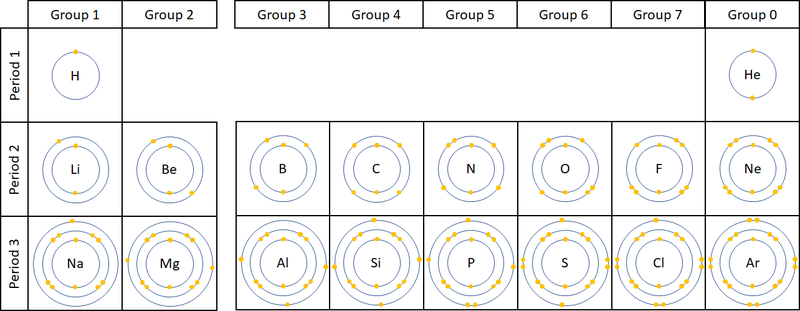Difference between revisions of "Electron Orbital"
| Line 10: | Line 10: | ||
{| class="wikitable" | {| class="wikitable" | ||
|- | |- | ||
| − | |[[File: | + | |[[File:ElectronicConfiguration.png|center|800px]] |
|- | |- | ||
| style="height:20px; width:200px; text-align:center;" |A [[diagram]] showing the '''electron shells''' and '''electrons''' in the first 20 [[element]]s on the [[Periodic Table]]. | | style="height:20px; width:200px; text-align:center;" |A [[diagram]] showing the '''electron shells''' and '''electrons''' in the first 20 [[element]]s on the [[Periodic Table]]. | ||
|} | |} | ||
| − | |||
: [[Atom]]s in the same [[Group (Chemistry)|group]] have similar [[Chemical Property|chemical properties]] because they all have the same number of [[electron]]s in their [[Outer Shell]]. | : [[Atom]]s in the same [[Group (Chemistry)|group]] have similar [[Chemical Property|chemical properties]] because they all have the same number of [[electron]]s in their [[Outer Shell]]. | ||
| − | |||
Revision as of 16:04, 24 November 2018
Key Stage 4
Meaning
An electron orbital, also known as an electron shell, are the locations where electrons orbit the nucleus of atoms.
About Electron Orbitals
- Each electron orbital only holds a certain number of electrons.
- These orbitals and the number of electrons in an atom determine the chemistry of an element.
- The number of electron orbitals determines the Period on the Periodic Table.
- The number of electrons in the last orbital (Outer Shell) determines the Group on the Periodic Table.
| A diagram showing the electron shells and electrons in the first 20 elements on the Periodic Table. |
- Atoms in the same group have similar chemical properties because they all have the same number of electrons in their Outer Shell.
